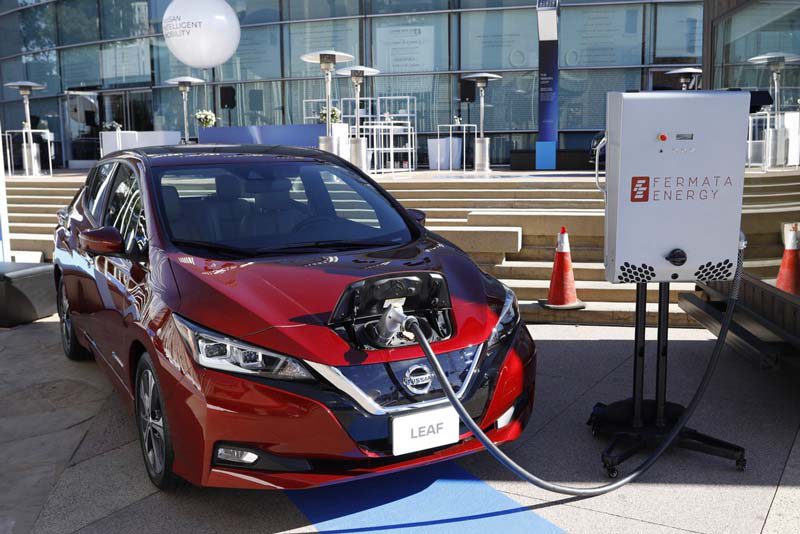Japanese carmaker Nissan is making plans to capitalise on its innovative vehicle to grid (V2G) technology, announcing on Wednesday three new initiatives to allow electric vehicles to supply, share and store power.
The car maker’s popular Nissan Leaf already comes standard with a bidirectional V2G system that allows the EV to both charge and supply electricity to the grid, with Germany recently giving the system a green light for use to help stabilise fluctuating energy supply.
The new plan, dubbed “Nissan Energy”, goes further than this, establishing an “ecosystem” to help owners of Nissan EVs to connect their vehicles to the local and grid energy systems, as well as finding new ways to create a second life for used EV batteries.
“Nissan Energy will enable our customers to use their electric cars for much more than just driving – now they can be used in nearly every aspect of the customer’s lives,” said Daniele Schillaci, Nissan’s global head of marketing, sales and electric vehicles in a statement.
“Our Nissan Intelligent Mobility vision calls for changing how cars are integrated with society, and Nissan Energy turns that vision into reality.”
The plan consists of three interconnected arms: Nissan Energy Supply, which aims to assist customers by identifying compatible at-home charging systems as well as locating CHAdeMO charging sites – the latter it says will be available through an updated nav system in the Leaf as well as its NissanConnect smartphone app.
Nissan Energy Share covers all aspects of bidirectional charging capabilities, from vehicle-to-home (V2H), vehicle-to-building (V2B) and of course vehicle-to-grid (V2G) – a project that could potentially add up to 10GWh of energy storage capacity if all Nissan EVs on the road were fully utilised.
The last facet of the plan is Nissan Energy Storage, which aims to find more ways to repurpose used Nissan EV batteries, such as in industrial machines like forklifts or as part of a power generation system for public facilities like sports arenas.
Nissan says it already has storage programs underway, including at 4R Energy Corp’s facilities in Japan, and at Holland’s Johan Cruyff Arena, where 148 Nissan Leaf batteries allow the stadium’s system to operate independently from the main power grid in the case of a blackout.
As part of the plan, Nissan has also initiated three key projects that it says will help it establish standards for vehicle energy share systems.
The first is already underway in Hagen, Germany, where Nissan Leaf cars are being used in an energy reserve storage pilot undertaken in collaboration with energy supplier Enervie and tech company Mobility House.
A second has just been announced in the US, where Nissan North America will pilot the use of Leaf cars under its Energy Share initiative along with V2G storage company Fermata, to supply power to buildings at its headquarters in Franklin, Tennessee, and its design center in San Diego, California.
The third, which is being undertaken in Japan along with electricity and telecom partners, involves a series of field test using V2G tech and “virtual” power plants, is testing possible uses of the technology to assist in energy management.
“Nissan now offers customers a true EV ecosystem with Nissan Energy,” says Schillaci.
“This is what we feel is the “new standard for electrification’ – it’s not just about owning a vehicle but taking advantage of all the associated benefits, for the customer and society overall.”

Bridie Schmidt is associate editor for The Driven, sister site of Renew Economy. She has been writing about electric vehicles since 2018, and has a keen interest in the role that zero-emissions transport has to play in sustainability. She has participated in podcasts such as Download This Show with Marc Fennell and Shirtloads of Science with Karl Kruszelnicki and is co-organiser of the Northern Rivers Electric Vehicle Forum. Bridie also owns a Tesla Model Y and has it available for hire on evee.com.au.




